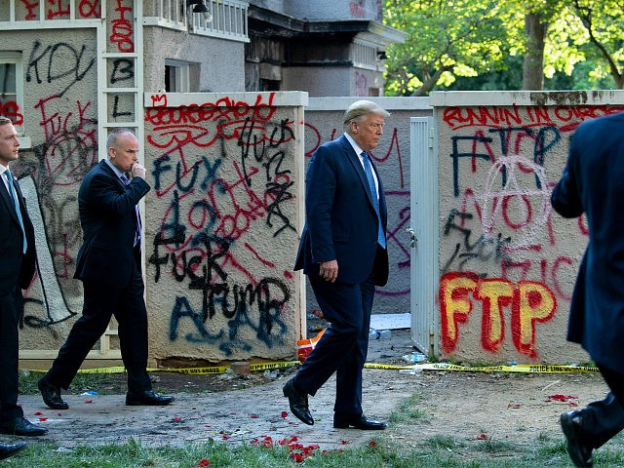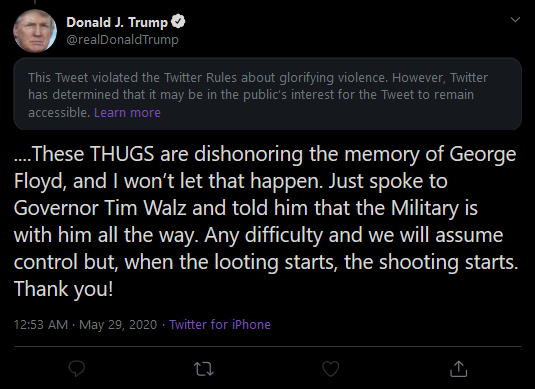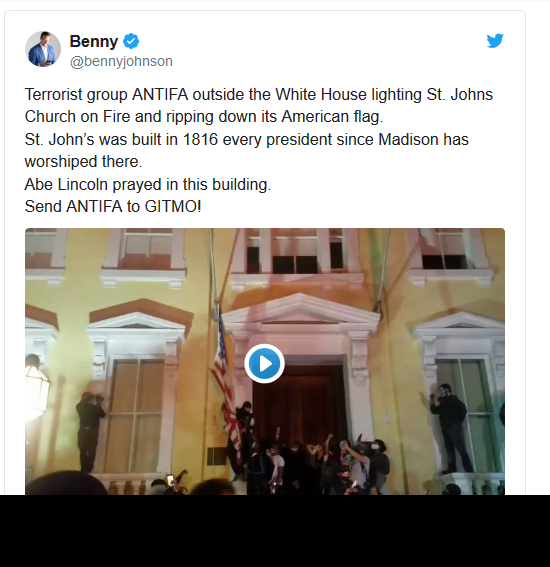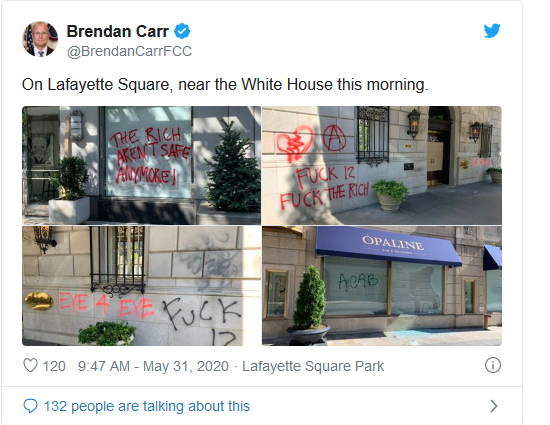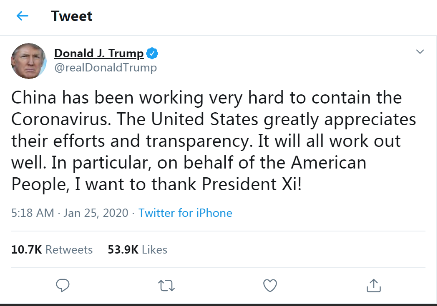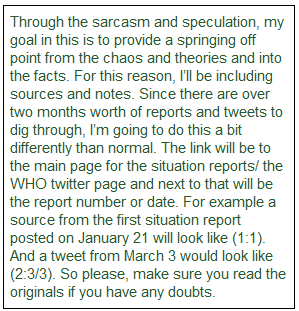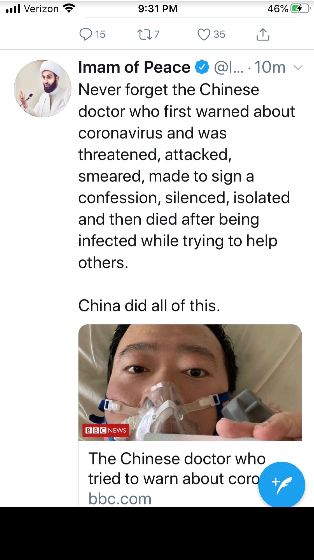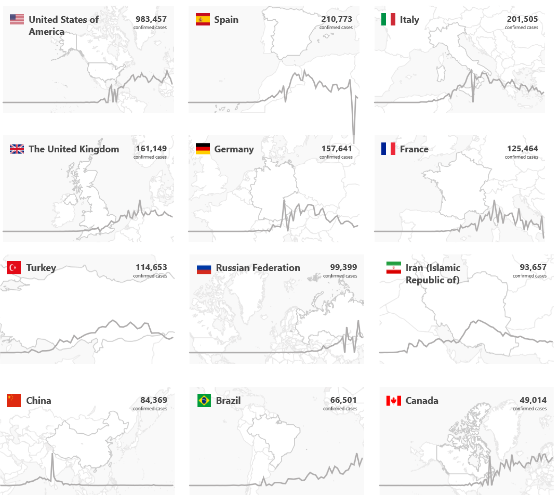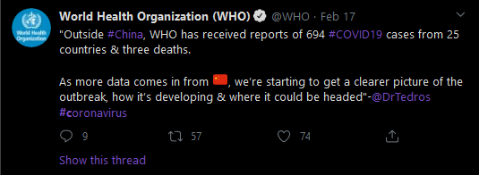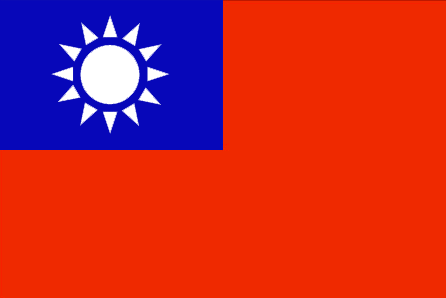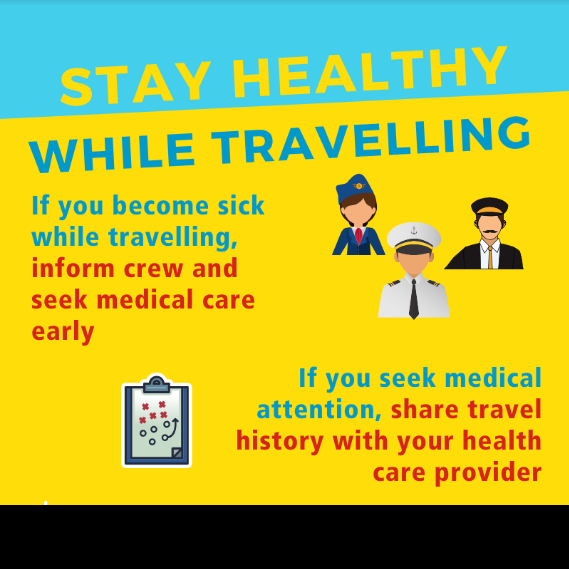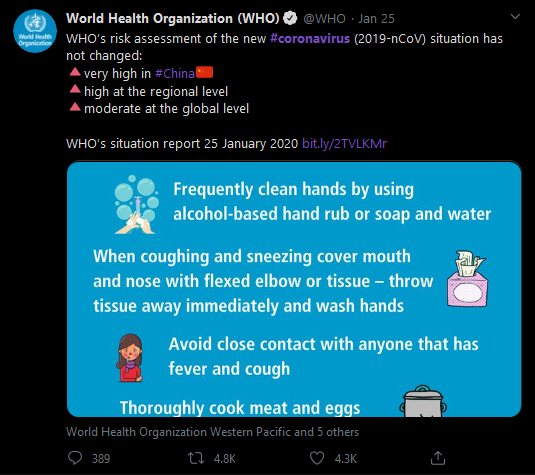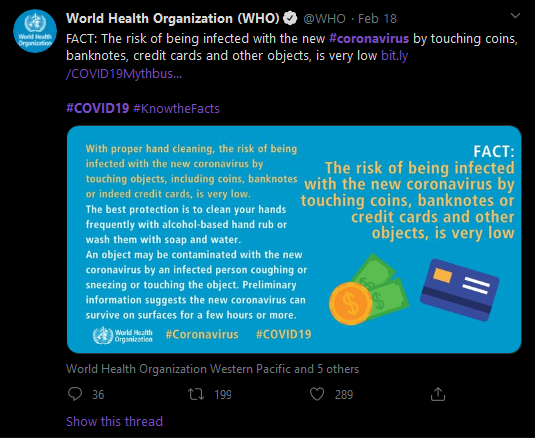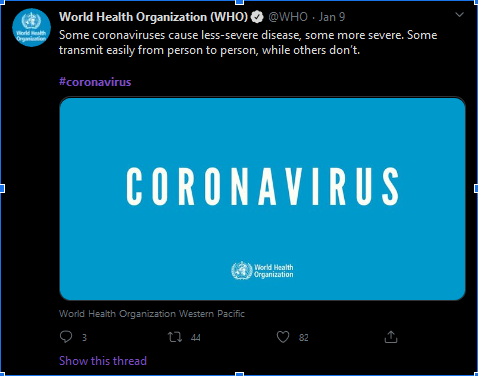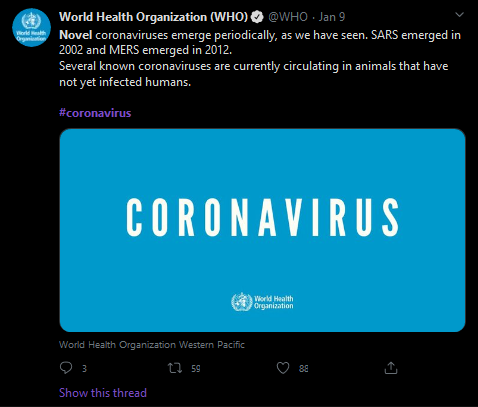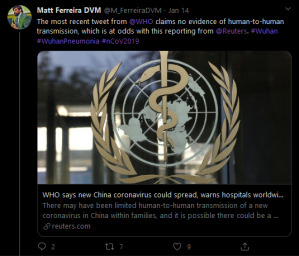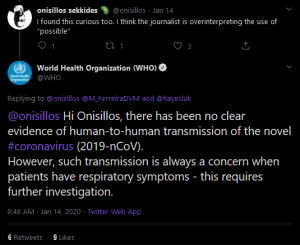Part 1: Just the Facts Please
Okay, to the surprise of probably no one, the bard is not Black. To the surprise of all the White boys telling me I have a tiny penis for siding with facts and the Black voices who have also sided with the facts: I actually have no penis. And I was born that way.
So now that little secret is out in the open. I still plan to keep the logo, even if 2020 side armed me into breaking the illusion before four months have passed. Plus, I still don’t like the idea of any unnecessary information being out there to lead people to me due to my family and job, not until I know I can do it safely anyway. If you’ve seen any of the videos going up on Twitter, completely ignored by the news, you’ll understand why even in my relatively red state I’m not about to take any chances.
For a bit more information, I also technically fall into that dreaded Millennial category: or at least I think I do, the qualifications keep changing depending on who is trying to get themselves out of the label. Therefore, despite being raised conservatively and finding myself leaning that way in many things, I still had that moment–like everyone in my generation has been programmed to–where I see the crowd, hear their cries and see their passion, and I stop. I think on all the movies of the good guys overcoming the bad regime and I wonder: am I in the wrong? Because I know what I call personal responsibility seems harsh. What I call accountability seems cruel. And the news is a constant inundation of terror and pain.
That’s when I turn to facts. That’s when I listen to voices that have been silenced. And I can now say with confidence, that my beliefs passed that test. In this article, I’ll be covering the police conundrum and systemic racism issue that is linked to it. This blew up into a massive piece so I’ll be breaking it at least in half. This is the fact half and in a few days I’ll post the voices and news half. If I’m not hiding in a bunker burning through my extra padding as we fight for survival, that is.
The Facts
Let’s get two final things straight as we dive into this discussion. First, I’m not doing this to give anyone an excuse to be terrible to anyone else. This is not about pointing fingers, it’s not about revenge or calls to action. It’s about finding the truth about where our real problems lie as a nation so we can stop fighting and find real ways to move forward.
Second: numbers are numbers. They are not racist, they cannot be appropriated, and two portions of data can’t be held up as accurate and a third called the “statistics of the oppressors.” I’m tired of hearing those pointless arguments. Face the facts and come up with real solutions. That’s the only way we’ll be able to put this to bed once and for all.
So what are the facts? Is there systemic racism in America, especially in our police? Do parents need to worry every time their child leaves the house that they’ll fall to a police man’s bullet? Do Black parents need to fear this the most?
The answer is a resounding no. No, the police are not running around slaughtering people in the streets. No, the police as a whole are not targeting anyone of a certain race. No, the average person “minding their business,” as someone claimed on Twitter, is not going to die just for the hell of it at police hands. And I have evidence, available to everyone if they would stop listening to the same media sources that think a brainless virus, that can’t even reproduce on its own let alone think politically, can magically take two weeks off from infecting people if their cause is “justified” only to reappear when the wrong-think group comes back to hold their own rallies and meetups.
Let’s look at some data, starting with the least controversial we possibly can, and build our way to the real problems and the hard truths so next time we can decide what we can do to work towards a solution for everyone.
Biology and Death
Population
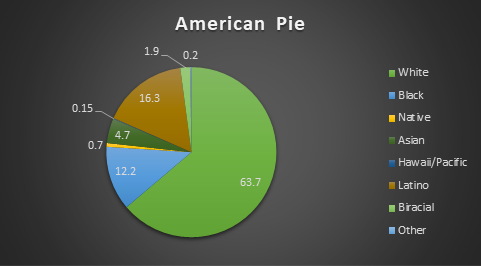
The United States is made up of many different peoples. From all different lands and histories our ancestors, or sometimes we ourselves, came crawling towards Lady Liberty with the hope of a better tomorrow. So it’s a real shame that in the year of Our Lord 2020 we still classify ourselves based on skin color.
Because let’s face it, we don’t separate each other by heritage. We don’t care about Irish or Swedish. We don’t care about Kenyan or Ethiopian. We don’t care about Chile, Mexico, Spain, or Brazil. It’s Black, White, Asian, Native, Latino, and mixed/other. That says next to nothing about who we are. Elon Musk might be from North Africa but no one is going to let him into Black crowd. I’m pretty sure that’s why the term Black became the politically correct one over African American. Not all Africans are Black.
There’s our Problem #1. We’ve let ourselves be divided this way in our politics, our schooling, our advertising, and our social lives. I’ll leave out medicine because, like biological gender, different peoples can have different health concerns based on their country of origin and skin color.
Problematic as it is, that’s how all of our information is sorted so that’s what we’ll have to stick with. Using the 2010 census information we can see that roughly 64% of Americans are classified as White, around 12% are classified as Black, 16% are Latino, 0.7% and 0.15% are Native and Pacific Islanders, 5% are Asian of some kind, and around 2% are classified as biracial and other. These are the numbers I’m using, even though I’ve seen 13 and 14% be thrown around for the Black population.
I will warn you, in a few places I have to get creative with number interpretation. The reason? The FBI and other crime units in the US consider Hispanic/Latino an ethnicity not a race. So while this census data has them as their own separate group, in much of the crime information Hispanics are split up and divided depending on their skin color. Hispanic data is included as a separate statistic in most, and I’ve done my best to represent it when possible, but there is usually a bit of a disconnect in the numbers because it’s overlapping data.
Cause of Death
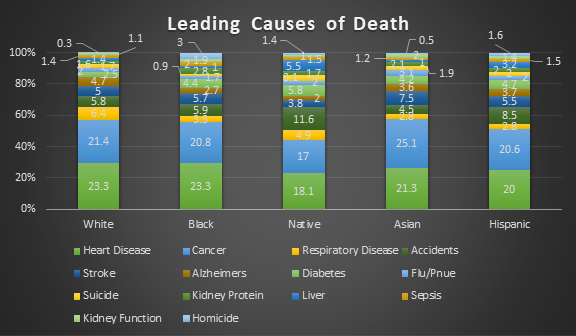
The next thing we need to ask is: are Black individuals more likely to die by homicide than other races. Looking at the CDC’s listing of common deaths I’ve found that, yes actually, they are. Black Americans are the most likely to die to homicide at 3% with Hispanics and Native populations coming in second at half that. White and Asian Americans both bring up the close though White’s higher overall population count brings their percentage number down the lowest. On the other hand, Blacks have the lowest suicide rate by a whole percentage point and if you know someone who is a Native American, please hug them and tell them it’s going to be okay because they leave the rest of us in the dust when it comes to rate of suicide. They also have almost twice the accidental deaths which looks a bit suspicious with that suicide rate.
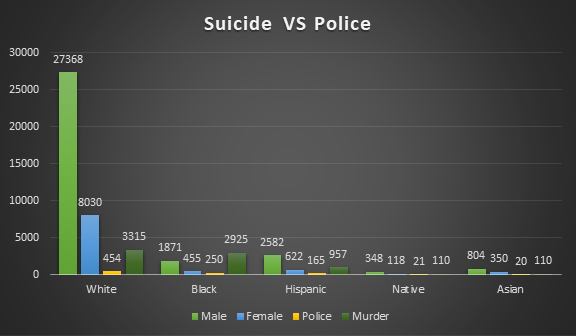
If we’re being honest, I’d argue that suicide is a much bigger topic than police brutality or even murder. In not a single case does the number of police killings outnumber the number of suicides: it’s a big problem for everyone. So hug your white male friends too because that number is outrageous no matter the percentages. [Note: I split the ‘other’ category for murders between Natives and Asians because the FBI does not distinguish, neither does WaPo in their counts for deaths by police which is also split in half for this purpose. Also, as stated before, the Hispanic overlaps with the other counts due to how the FBI tracks race and ethnicity separately.]
Though, as we can see, the lowest suicide rates and the highest murders makes Blacks the only case where we see the homicide bar surpass the suicide bars.
Since, we’re still focused on the riots and racism against blacks, we’ll throw the suicide chat to the side. Instead we’ll focus on how, in a few short paragraphs, we have answered one of the biggest talking points: Black Americans are more likely to be killed than any other race. So what next?
Crime and the Police
Blood on the Hands
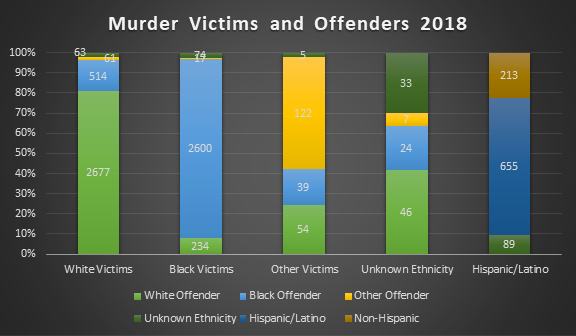
If we want to see if these murders are a matter of racism and police brutality, we need to look at who is causing them. This is where we start to get into the controversial territory. Because if you look at the facts then the ones most responsible for killing Black Americans are other Black Americans. Just like with Whites, Hispanics, and “Others,” you are more likely to be killed by someone who looks just like you than you are to be killed by anyone else. And it’s not close by any means.
I think that is an important thing to note: you are more likely to be killed by any relative or friend over an argument than you are to be killed as a result of a hate crime. I don’t want to negate the hate crimes, because even with the vast majority of crimes being simple intimidation, Blacks do report the most hate crimes followed by Jews, Whites, then Gays. It is something we need to keep in mind.
There is something else that needs addressing too. It’s another of the controversial things that is often shut down, which I think in part is due to how outlandishly blown out of proportion the graphs that I’ve seen wind up being. I’ve been guilty of spreading a few of these around myself, mostly because I didn’t pay close enough attention to the titles, so I have even more reason to set the record straight.
Blacks kill more White people than Whites kill Black people.
Not just in numbers, but in percentages of crime too. The number is almost double: 8% of Blacks are killed by Whites and 15.5% of Whites are killed by Blacks. So yeah, if you see a table going around that claims more than a 2x higher interracial murder rate, that’s some bull. If it’s violent crime in general… Well, we’ll get to that when we get to it.
Why do these things matter? Because of what we’re fighting about. Black Lives Matter protesters are taking to the streets saying that it is dangerous for Blacks in our nation today and they point the finger at White people and the police as the reasons. Despite no guarantee that they are committed by white people and though the majority of the 2500 hate crimes experienced by Blacks would statistically be intimidation, simple assault, or vandalism, it is more than twice what is reported for whites. That is something that I want to see change and eradicated as much as possible. Though, I’ll go ahead and throw up Problem #2 which is, those 2500 people, even if they are all white, do not make the few hundred million other white folks in America also racist. Just like any assaults or murders by a black man don’t stain all black men.
Problem #3 is not only that common lawlessness is what kills most people, but also that we aren’t allowed to talk about it. If a mother is afraid of her child walking out the door, it shouldn’t be because she thinks a police officer or a member of another race are going to kill them. Ideally, no mother will have any fear for her child’s life but it won’t go away as long as we ignore what the real problem is.
And because we’re tackling the big issues here, Problem #4: though Blacks do record more interracial hate crimes than any other group, they are not immune from targeting people of other races in a more deadly fashion than the hate they receive. Calling this information racist, appropriation of facts, or the “statistics of oppressors” is not going to help anyone get over these deep wounds we have.
Police: Help or Harm
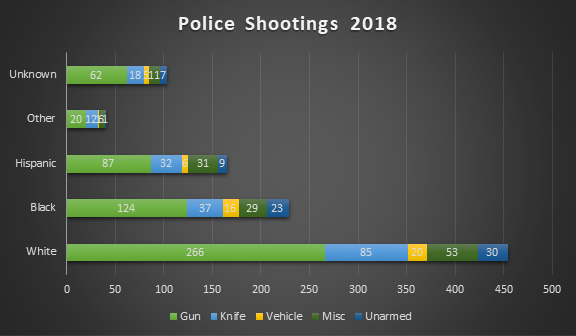
So what about the police? Where do they fit into all of this? And why am I using the 2018 numbers instead of the 2019 numbers? It’s not to make things look better, I promise. I’ll acknowledge right now that 2019 was worse for police fatalities than 2018. But there are two reasons why I chose the year I did. First, at the time of writing this the in depth breakdown charts for 2019 crime had not yet been released meaning I had more accurate data overall from 2018. Second, like in two other cases, I caught a source editing itself after things began to heat up politically.
Yes, after Tucker Carlson praised WaPo for their accurate record keeping on police shootings and used their data to explain the ten deaths of unarmed black individuals at the hand of police in 2019, they found 4 more deaths to add to the count. I admit they also found 6 more White deaths taking that number from 19 to 25 which keeps the general ratio, but I find it particularly hard to accept that between June 3 and June 13 they were able to discover, or reclassify,ten different victims who had no weapons at the time of their death. There does not seem to be any such adjustments to the 2018 data, perhaps due to the number of unarmed deaths being higher anyway.
Let this be a lesson: Problem #5 the media will do anything it can to make the situation look worse than it is. There is nothing so terrible, heinous, or tragic that the media can’t twist it worse to fit their narrative.
Now, back to what the police can and can’t be blamed for. If you look at the chart, you’ll see right away that unarmed or unknown police fatalities are a minority of the total number of fatal confrontations at the hands of police. For Whites, the 30 cases wind up being 6% of overall deadly encounters with police while Blacks wind up with 23 or 10%. There is a small difference of around 4% here. And even if you compare it to total homicide deaths, leaving you with 0.9% of White deaths and 0.7% of Black deaths, I think we should have a look at what is going on here.
And no, I’m not going to say don’t run from or fight the police. Yet. No matter how much of an argument that may be, I think there is something else to look at first.
A group of scientists, eager to know the truth on the question of perceived racial disparities in police encounters, used a different metric to measure that I’m shocked has never been talked about before. In fact, they’ve been discussed so little that some try to argue their invalidity. Why? Because it turns the argument on its head.
How can that be? After all, at 64% of the population Whites are fatally killed by the police 46% of the time while Blacks only represent 12.2% of the population and they were 23% of the deaths in 2018. Between that and the 4% difference in unarmed deaths, it’s a clear case, right? Not when you factor in violent crime and county demographics.
“However, using population as a benchmark makes the strong assumption that White and Black civilians have equal exposure to situations that result in FOIS. If there are racial differences in exposure to these situations, calculations of racial disparity based on population benchmarks will be misleading. Researchers have attempted to avoid this issue by using race-specific violent crime as a benchmark, as the majority of FOIS involve armed civilians. When violent crime is used as a benchmark, anti-Black disparities in FOIS disappear or even reverse.”
David J. Johnson, Trevor Tress, Nicole Burkel, Carley Taylor, and Joseph Cesario
Disappear or even reverse. It’s a big statement, especially since our entire world is in the process of burning down using this as its excuse. We’ll save any speculations on whether or not that’s what’s really going on for later. For now, let’s see how they came up with those numbers.
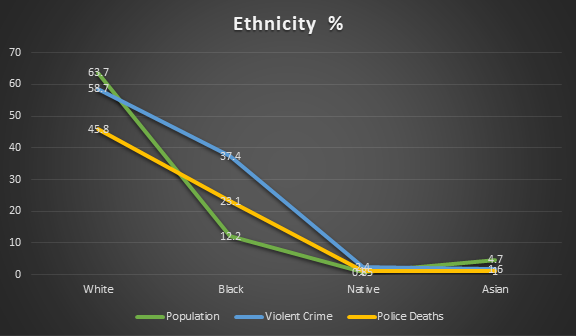
We already broke down murders, but there are more violent crimes than that. There is rape, aggravated assault, and burglary to name a few. And as you can see, those numbers aren’t pretty. For 2018, while White people committed roughly 59% of violent crime, slightly smaller than their overall representation, Black people committed 37%. That’s three times the size of their share of the population.
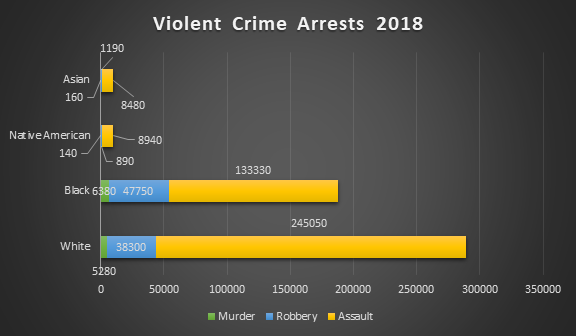
If the percentages of overall crime aren’t enough, let’s use this second graph to break it down another way. If you divide population density by the number of violent crimes, it’s one crime per every 682 White people and one crime every 201 Black people.
Not every person is a criminal. The vast majority of both races are loving, peaceful, smart, and non-violent. It’s time to realize all the same, there is a reason police officers are found frequently in Black neighborhoods. And we have to start admitting that it’s not racism.
Just like how White people made up 47% of fatal police encounters in 2018 versus 23% of Blacks, the #1 and #2 spots, respectively, the exact same trend is present among crimes committed. This supersedes the percentage of population because POLICE AREN’T POLICING POPULATIONS, THEY ARE POLICING CRIME.
Simply put, Blacks make up much less of the population but, Problem #6, they act out violent crime proportionately more than any other race leading to increased encounters with the police.
“On the other hand, race-specific violent crime strongly predicted the race of a civilian fatally shot by police, explaining over 40% of the variance in civilian race. These results bolster claims to take into account violent crime rates when examining fatal police shootings.”
David J. Johnson, Trevor Tress, Nicole Burkel, Carley Taylor, and Joseph Cesario
Now for the other part of the study, county demographics. Because I know some of you will be chomping at the bit eager to shout out that “just because some black communities have more crime doesn’t mean they all do!” and that is correct. Luckily for us, those conducting this study also thought of that so they dove into county specifics. They looked into what crimes took place in a certain area and what sorts of people became fatally involved with the police.
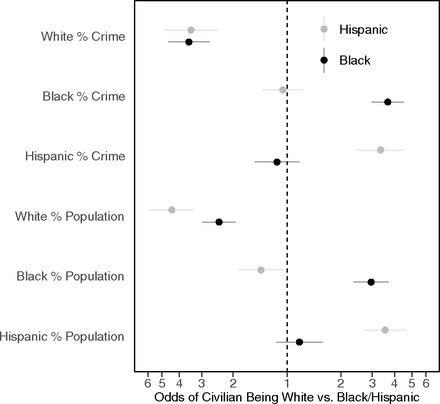
What they found is that the more White crime went up, the less likely it was that a Black or Hispanic person would be killed by police. Conversely, they noted that as Black or Hispanic crime went up, more people shot were Black or Hispanic respectively. Black and Hispanic crime rates did not have a major positive or negative effect on the other race.
“Controlling for predictors at the civilian, officer, and county levels, a person fatally shot by police was 6.67 times less likely (OR = 0.15 [0.09, 0.27]) to be Black than White and 3.33 times less likely (OR = 0.30 [0.21, 0.47]) to be Hispanic than White. Thus, in the typical shooting, we did not find evidence of anti-Black or anti-Hispanic disparity.”
David J. Johnson, Trevor Tress, Nicole Burkel, Carley Taylor, and Joseph Cesario
Something that the article pointed out is that disparities and bias are not necessarily the same. A police officer could potentially have a personal negative bias while his actions fall within the realm of excusable disparity. But all of them? Or even most of them?
“We did not find evidence for anti-Black or anti-Hispanic disparity in police use of force across all shootings, and, if anything, found anti-White disparities when controlling for race-specific crime. While racial disparity did vary by type of shooting, no one type of shooting showed significant anti-Black or -Hispanic disparity.”
David J. Johnson, Trevor Tress, Nicole Burkel, Carley Taylor, and Joseph Cesario
How could a systemically, set in its ways, racist to the core, even if on an internal level, police force possibly accidentally only shoot people who fell in line with racial crime so perfectly that it made White people look targeted by comparison?
More Than Murder
Only two more bits for this section and we’ll be through part one.
As I mentioned before, there are two types of graphs floating around the internet right now. The first is specifically about interracial murder, the other is about interracial violent crime as a whole.
We saw that when it comes to murders by the percentages, Blacks are roughly twice as likely to kill Whites. But what about everything else? Are the crazy graphs that show massive disparities between races correct? Well…
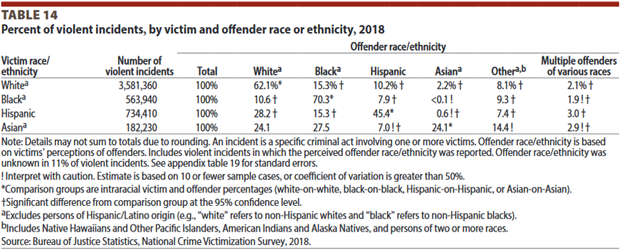
There are a few caveats as you can see from the extensive ledger. Specifically, there is an issue with some of the numbers surrounding Asian and Other crime. Either because they couldn’t find enough data on it occurring, or because the data varied so widely, it was hard to pin down an accurate finding. I think it’s pretty safe to say that Asians leave everyone else alone for the most part which is what has caused the issues. Now we know who gets the most disciplined population award.
Taking in the information as a whole, the first thing of note is that White people get beat on. A lot. No other group comes close, not even by half. Like, I don’t know how these numbers can even be publicly available and we are going through the crap we are.
Not only do Whites get targeted more often, according to this White people are twice as likely to target an Asian or Hispanic person than a Black person and a Black person is one and a half times as likely to attack a White person than the other way around. That’s not good, mind you, but it takes all the wind out of the Whites bullying Blacks argument. And to give a visual to the numbers, here’s one more Microsoft chart.
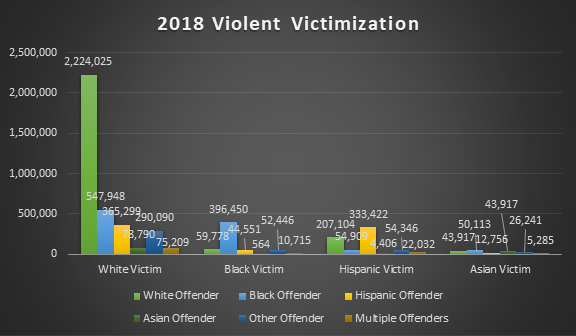
Here we see again the visual reminder that the person most likely to wrong you is someone who looks just like you. Unless you’re Asian then you’re more likely to be wronged by a Black individual. And, if you look closely you’ll see that while percentage-wise Blacks are hurting more Blacks, when it comes down to numbers, they are hurting more Whites.
Other things to note are Hispanics overall receive more violent victimization than Blacks; who victimize them at around the same rate, though overall lower numbers, as they do Whites. And we could all stand to learn a thing or two about not being assholes from the Asian communities in America.
What does this all mean? For one, it means that the chart I’m referring to is accurate, though it leaves out Asians entirely and the intraracial crime bars. I feel that does us an overall disservice, because if there is one thing that we’ve seen and I think deserves to be front and center is the fact that we are hurting ourselves more than we are targeting anyone else. Whites do it, Blacks do it, Hispanics do it, and Asians just want to be left alone. Violence wise anyway.
Problem #7 The injuries we are causing to our neighbors is a result of the pain and turmoil within ourselves, not because of a prejudice against that neighbor.
Why So Trigger Happy?
One more thing for this section. Let’s tackle this last stupid straw man of an argument that I hear thrown around about police. “Why is he a police officer if he’s so afraid of dying?” This is normally said about an officer who kills a subject who is armed and didn’t shoot, a subject who appeared armed but wound up not being so, or a subject who was unarmed but did something else to cause a life or death situation to unfold. Let’s address each one of these.
First: Subject is armed but does not fire first. News flash, you don’t have to wait for someone to kill you to be justified in defending yourself. That’s kind of the entire point of self defense; not dying. And yes, a police officer who is in the process of confronting a criminal who decides to make the encounter about life and death deserves to live more than the criminal who refused to listen to orders. Deescalation is not a magical thing. It’s one thing if you’re in a standoff and no one is directly pointing a live weapon at anyone else. That’s when you get the negotiators on the line and try to deescalate. When weapons are drawn and pointed, it’s time for orders and stern commands. And if you’re running and see someone aim at you, it’s time to fire before you lose your life and your weapon.

Second: Subject appears armed but winds up being unarmed. This is when a cell phone, toy weapon, or in the case of a popular book a hairbrush looks like a weapon in the heat of the moment and due to the escalated situation, the subject gets killed. Sometimes when this happens, it’s a matter of suicide by cop. Other times, it’s a matter of a mental break and darkness. Again, would you risk your life by waiting the extra seconds to see if it’s a handgun or an air soft gun? These cases are tragic, and luckily much less frequent than even unarmed deaths.
Finally, we have the unarmed individuals who still pose a threat. Because that can be the case. They can choke an officer, try to wrestle their gun away, resist tazing and still continue to fight, they might have a history of armed standoffs and claim to have a gun during another standoff, or they could have a gun on hand that they just didn’t have time to reach because the officer stopped them. It’s funny how the only two people charged with murder or manslaughter in these unarmed cases are those whose subjects had guns at hand.
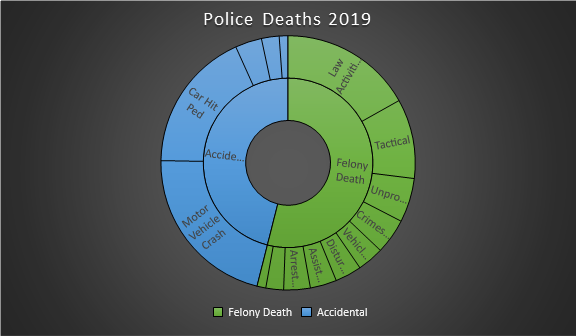
And let’s not pretend that it doesn’t go the other way too. In 2019, 48 police officers were killed on the job. Many were just pulling people over for speeding. Five were killed in unprovoked attacks just for being police officers, two more were ambushed. Three were killed by cars, one died trying to serve a court order. There is not a single part of their job that is safe. Because even when it’s not felonious, cops can be killed on the job. Sixteen were killed by being run over during a car accident. Have you ever seen a police officer rescue someone in the water? Well last year two officers drowned. One was even killed by a rogue tire incident. In total 89 officers died last year.
Doesn’t look like much? Well, that’s because they are the unlucky few. They weren’t the only ones who were on the target block. In 2018, [again, no data for 2019 yet] 58,886 officers were assaulted. That’s roughly ten percent. One in ten officers will be attacked at some point during the year. We also learned that 3 out of 100 officers would be seriously hurt from these assaults or 1 in 33.
The majority of these assaults happen during disturbance calls i.e. domestic violence or bar fights. The second most likely time to be assaulted is when you’re arresting someone and his buddy decides he’s not happy with the situation. The third is when you’re transporting a prisoner. So if the cuffs are a bit tight, maybe think about what happened the last time someone pulled a Houdini on the officer.
Any one of these incidents could have turned from an injury to a death. And for all the times they were assaulted in 2018, less than 2% of that number died at the hands of police. That doesn’t include all the traffic stops and domestic calls and rescues that didn’t result in any fighting or injury. Because that is how most encounters go: you just fess up, or remain calm and lawyer up later, and take the ticket. At worst things will devolve into a screaming fit but hurt feelings don’t hold a light to stitches or a body bag. But across America, every day, roughly 161 police officers get assaulted. And roughly once every four days, a police officer dies. And every day they put on their badge and kiss their families goodbye, they know it could be their turn on the block.
So instead of asking “Why are they police officers if they’re afraid they’ll die?” a better question is “Why are we persecuting those who know today could be their last and choose to head out anyway?”
And no, walking away because their fellow officer was convicted of first degree murder and is now facing the death penalty for doing everything by the book does not mean they’re bad cops or cowards, it means they don’t want to have fewer rights than the average citizen while doing more to protect them.
Summary
We came into this with the story that Black people in America faced monumental discrimination, particularly from White people and the police. For this study, we took a look specifically at crime and the police to see if those who say they feel nervous being pulled over or are afraid to see their children walk out the door were correct to feel that way or if it was all a fabrication. After looking at the different facts, we were able to draw some conclusions about what really ails these communities.
Problem 1: We allow our society to divide us based on skin color, not on anything personal or substantial. This difference wedges a gap early on and has nothing to do with heritage as no “race” has a single nationality or tradition that it stems from.
Problem 2: We are too quick to make numbers personal. No matter how many or few acts are done by someone of a certain appearance, holding the collective responsible is only going to make life worse for everyone.
Problem 3: While it is correctly said that Blacks are the most likely to die violently, we are told time and again that we are not allowed to talk about how 90% of those deaths are caused by other Blacks. This not only inflames ill will among the accused but prevents the real problem from being addressed, meaning the issue will never get better.
Problem 4: Black people kill more White people by number and by percentage than White people kill Black people. Ignoring this or calling it racist to point out only makes you look hypocritical.
Problem 5: The media lies about everything for sensation and political advancement. Always go to direct sources and get the whole picture.
Problem 6: Police come into contact with Black people more often than their population size would suggest because Black people commit more violent crimes than their population size would suggest.
Problem 7: Possibly the biggest one, each race is hurt more by other members of that race than by someone outside of it. We do not have a problem with race relations, we have a problem with lack of morals.
In part two we’ll be putting these observations into practice and see if they hold up by taking a few stories apart. And also we’ll see how people of color are reacting to these same situations on the other side of the spectrum. Until then, don’t use the truth to cause more hurt feelings. And remember: work to be healthy and be happy with the rest.
